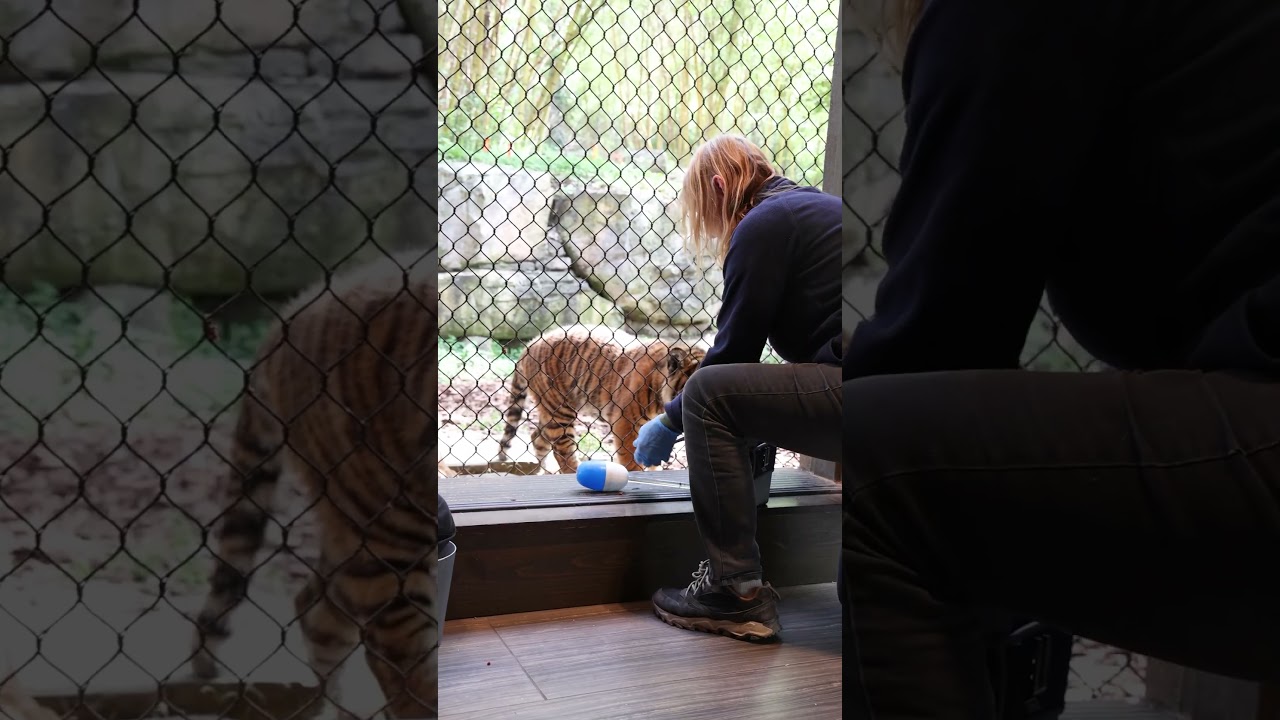– The critical role of training sessions in promoting the health and well-being of tiger cubs in captivity.
– The significance of incorporating enrichment activities into training sessions for tiger cubs to stimulate their natural behaviors.
– The impact of well-conducted training sessions on tiger conservation efforts and education.
– Important considerations and approaches in managing tiger cub training sessions effectively.
Training sessions with tiger cubs are pivotal in ensuring their physical and mental health, particularly in captivity. Such activities are integral for fostering the development of these majestic creatures, closely mirroring the challenges they would encounter in the wild. This approach benefits the tiger cubs by promoting natural behavior patterns but also aids in effectively managing these animals within zoo environments, contributing significantly to conservation efforts and educational initiatives.
At the heart of a successful training session with tiger cubs lie activities categorized as enrichment. These specially crafted tasks or challenges stimulate the cubs’ physical prowess, cognitive skills, and natural instincts. For instance, puzzles that require manipulation to release food treats mimic tigers’ problem-solving skills when hunting. Such exercises are crucial as they prevent boredom and stress, common issues in captive animals, by keeping the cubs engaged and entertained.
Moreover, training sessions serve a broader purpose beyond the immediate benefits to the cubs. They are instrumental in conservation education, offering zoo visitors insights into these animals’ natural behaviors and needs. Through demonstrations of training sessions, zoos can convey the importance of tiger conservation, shedding light on the threats these magnificent creatures face in the wild, such as habitat loss and poaching. Consequently, these sessions become a powerful tool for raising awareness and fostering a culture of conservation-minded individuals.
Conducting these sessions effectively requires a deep understanding of tiger behavior and needs. Keepers and trainers must be keenly aware of individual differences among tiger cubs, as each animal may respond differently to various stimuli. Training approaches should be flexible, adaptive, and patient, emphasizing positive reinforcement to build trust and cooperation between the cubs and their human caregivers. Utilizing rewards, such as food treats or physical play, enhances the learning process, making it a positive experience for the cubs.
Safety is also paramount during these training sessions. The physical well-being of the tiger cubs and the trainers must be prioritiously considered, with appropriate measures in place to avoid injuries. Creating a secure environment that allows for natural exploration while minimizing risks is essential.
Training sessions with tiger cubs support their development and welfare and contribute significantly to broader conservation and education efforts. Through these activities, cubs learn behaviors crucial for their well-being, while zoos gain valuable opportunities to advocate for protecting these splendid animals and their habitats. Moreover, the knowledge gained from observing and interacting with these cubs in training sessions enriches our understanding of tiger biology and behavior, feeding back into more effective conservation strategies.
Implementing these training sessions represents a harmonious blend of animal welfare, public education, and conservation advocacy. It demands a well-informed, compassionate approach, reflecting the dedication of zoo professionals to the preservation and respect of wildlife. As we advance in our understanding and methodologies, training tiger cubs will continue to evolve, reinforcing the essential link between human intervention and the thriving existence of these magnificent animals in both captive and wild settings.
*****
Source Description


